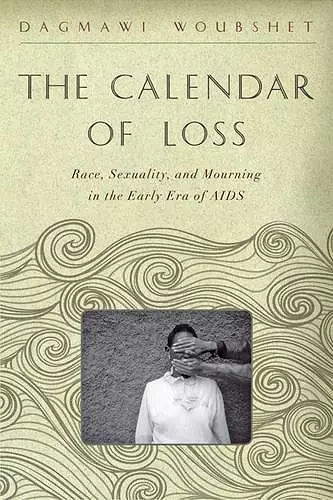The Calendar of Loss
Race, Sexuality, and Mourning in the Early Era of AIDS
Format:Hardback
Publisher:Johns Hopkins University Press
Published:12th May '15
Currently unavailable, and unfortunately no date known when it will be back

The Calendar of Loss powerfully evokes the act of mourning in the AIDS era. It poignantly captures the tone of urgency, desperation, fatalism, and activist rage that characterized the 1980s for those touched by the onslaught of the AIDS epidemic. Dagmawi Woubshet performs an incredible balancing act: he offers respect to the dead and dying by truthfully rendering the ways in which they responded while somehow training a strong critical eye on the queer and racialized forms of AIDS mourning. Stylistically, the manuscript is brilliant in how it elegizes its subjects even as it rigorously analyzes a cluster of techniques deployed by AIDS mourners in a diverse array of high, popular, and mass forms, both traditional and experimental, including poems, short stories, funerals, eulogies, obituaries, epitaphs, memoirs, graffiti, protest speech, photography, film, dance, and art. Woubshet's writing is poetic without abandoning any heft of critical acumen. This is the smartest text on race and mourning or on the artistic response to AIDS that I've encountered. An extraordinary achievement. -- Marlon Ross, University of Virginia, author of Manning the Race: Reforming Black Men in the Jim Crow Era
An innovative and moving study, The Calendar of Loss illuminates how AIDS mourning confounds and traverses how we have come to think about loss and grief, insisting that the bereaved can confront death in the face of shame and stigma in eloquent ways that imply a fierce political sensibility and a longing for justice.His world view colored by growing up in 1980s Ethiopia, where death governed time and temperament, Dagmawi Woubshet offers a startlingly fresh interpretation of melancholy and mourning during the early years of the AIDS epidemic in The Calendar of Loss. When society denies a patient's disease and then forbids survivors mourning rites, how does a child bear witness to a parent's death or a lover grieve for his beloved? Looking at a range of high and popular works of grief-including elegies, eulogies, epistles to the dead, funerals, and obituaries-Woubshet identifies a unique expression of mourning that emerged in the 1980s and early 1990s in direct response to the AIDS catastrophe. What Woubshet dubs a "poetics of compounding loss" expresses what it was like for queer mourners to grapple with the death of lovers and friends in rapid succession while also coming to terms with the fact of their own imminent mortality. The time, consolation, and closure that allow the bereaved to get through loss were for the mourners in this book painfully thwarted, since with each passing friend, and with mounting numbers of the dead, they were provided with yet more evidence of the certain fatality of the virus inside them. Ultimately, the book argues, these disprized mourners turned to their sorrow as a necessary vehicle of survival, placing open grief at the center of art and protest, insisting that lives could be saved through the very speech acts precipitated by death. An innovative and moving study, The Calendar of Loss illuminates how AIDS mourning confounds and traverses how we have come to think about loss and grief, insisting that the bereaved can confront death in the face of shame and stigma in eloquent ways that also imply a fierce political sensibility and a longing for justice.
Early AIDS mourning, especially by gay men of color, is more than worthy of study. However, with the recent rise of Black Lives Matter, Woubshet's larger questions about the ways in which mourning structures Black subjectivity and the political value of sorrow in the midst of unspeakable loss make this work especially timely. In The Calendar of Loss, Woubshet brings together queer studies and African-Americans' studies to examine a rich and varied "archive of mourning" . . . Herein lies Woubshet's chief contribution to AIDS scholarship, as he reads the mourning of both Black and White gay men through an analytical lens that is explicitly both Black and queer. Whereas much of the critical AIDS scholarship has marginalized people of color, and particularly queer people of color, here they take center stage.
—Dan Royles, Florida International University, Modesto Maidique Campus, National Political Science Review
Woubshet's text demonstrates the indispensability of the arts to more democratic imaginings of the history, aesthetics, and politics of AIDS. A model of interdisciplinary scholarship, the book develops a new theory of mourning that will be of interest to scholars in African diaspora studies, queer studies, literary studies, gender and sexuality studies, and American studies. Woubshet's engagement with critical theory makes the text appealing to specialists and graduate students, but the author's careful distillation of these theories through lucid prose makes the book accessible to multiple readers, including undergraduates and community activists.
—Darius Bost, Callaloo
ISBN: 9781421416557
Dimensions: 229mm x 152mm x 19mm
Weight: 386g
192 pages